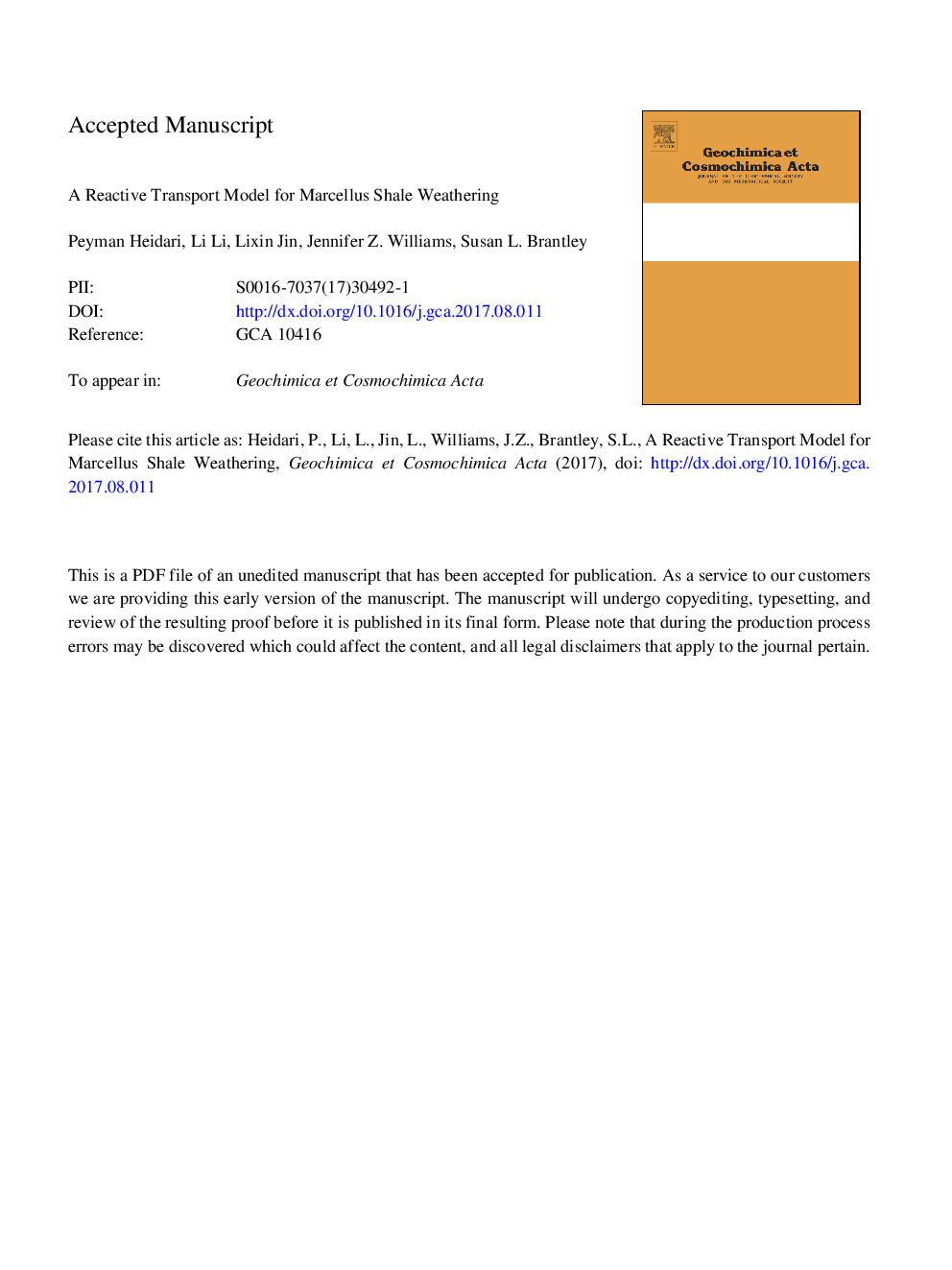ترجمه فارسی عنوان مقاله
یک مدل حمل و نقل واکنشی برای هوازدگی مارسلوس شیل
عنوان انگلیسی
A reactive transport model for Marcellus shale weathering
| کد مقاله | سال انتشار | تعداد صفحات مقاله انگلیسی |
|---|---|---|
| 134857 | 2017 | 53 صفحه PDF |
منبع

Publisher : Elsevier - Science Direct (الزویر - ساینس دایرکت)
Journal : Geochimica et Cosmochimica Acta, Volume 217, 15 November 2017, Pages 421-440
ترجمه کلمات کلیدی
هوای شیمیایی، مدل سازی حمل و نقل واجد شرایط منطقه بحرانی، مارسیل شیل،
کلمات کلیدی انگلیسی
Chemical weathering; Reactive transport modeling; Critical zone; Marcellus shale;

